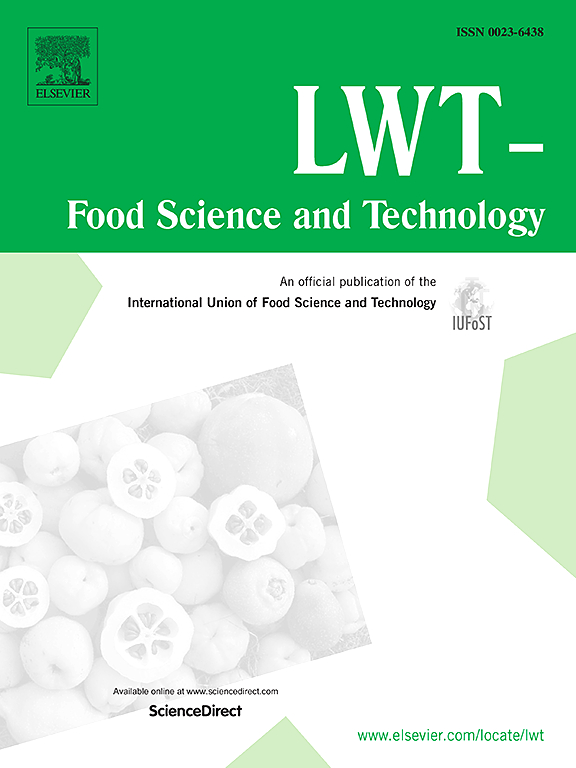IF 6
1区 农林科学
Q1 FOOD SCIENCE & TECHNOLOGY
引用次数: 0
摘要
研究分析了茶叶甲醇提取物的多酚特征、挥发性化合物、抗氧化、抗炎、抗糖尿病、抗衰老和抗癌特性。研究了五种茶叶:绿茶、红茶、青茶(乌龙茶)和白茶。绿茶中的酚含量最高(30.68 克/100 克),而乌龙茶中的酚含量最低(23.38 克/100 克)。使用气相色谱-质谱箭-氢谱法,根据质谱光谱和保留指数鉴定出 117 种挥发性化合物。白茶的抗氧化活性最高,而绿茶对 COX-1 和 COX-2 酶的抑制作用最强(高达 77%)。乌龙茶和白茶对α-淀粉酶的抑制作用最强(达 96.9%)。白茶和蓝茶的抗癌活性最强,对肺癌细胞有显著的细胞毒性作用。通过调节癌细胞中的 ROS,凸显了茶多酚在氧化应激和抗癌治疗中的双重作用。本文章由计算机程序翻译,如有差异,请以英文原文为准。
Comparison of polyphenol and volatile compounds and in vitro antioxidant, anti-inflammatory, antidiabetic, anti-ageing, and anticancer activities of dry tea leaves
In the study, the polyphenol profile, volatile compounds, antioxidant, anti-inflammatory, antidiabetic, anti-ageing, and anticancer properties of tea methanolic extracts were analysed. Five types of tea were investigated: green, black, red, blue (oolong), and white. The highest phenolics content (30.68 g/100 g) was found in green tea, while the lowest (23.38 g/100 g)was observed in oolong tea. Using the GC-MS Arrow-HS method, 117 volatile compounds were identified based on MS spectra and retention indices. White tea demonstrated the highest antioxidant activity, while green tea exhibited the strongest inhibition of COX-1 and COX-2 enzymes (up to 77 %). Oolong and white teas showed the most potent α-amylase inhibition (up to 96.9 %). White and blue teas displayed the strongest anticancer activity, with significant cytotoxic effects on lung cancer cells. The dual role of tea polyphenols in oxidative stress and anticancer therapy is highlighted by ROS regulation in cancer cells.
求助全文
通过发布文献求助,成功后即可免费获取论文全文。
去求助
来源期刊

LWT - Food Science and Technology
工程技术-食品科技
CiteScore
11.80
自引率
6.70%
发文量
1724
审稿时长
65 days
期刊介绍:
LWT - Food Science and Technology is an international journal that publishes innovative papers in the fields of food chemistry, biochemistry, microbiology, technology and nutrition. The work described should be innovative either in the approach or in the methods used. The significance of the results either for the science community or for the food industry must also be specified. Contributions written in English are welcomed in the form of review articles, short reviews, research papers, and research notes. Papers featuring animal trials and cell cultures are outside the scope of the journal and will not be considered for publication.
 求助内容:
求助内容: 应助结果提醒方式:
应助结果提醒方式:


